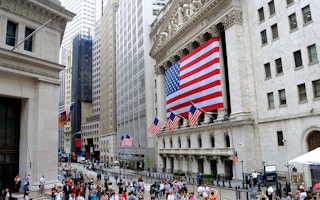The full potential of the financial system will need to be harnessed to deliver the new Sustainable Development Goals and the forthcoming climate change agreement in Paris.
The scale of financing required for an orderly transition to a prosperous, low-carbon and resilient economy is measured in the trillions, not billions. This means more capital for assets that protect and enhance natural capital and less for assets that deplete critical life support systems, such as biodiversity, soils, water and the global climate.
It is not just the quantum of finance that needs to change – but also its quality so that core financial services are attuned to the ways in which sustainability recasts the traditional risk:reward ratio.
Across the world, the awareness and commitment of financial institutions in banking, investment and insurance is growing. But what is striking is how financial policymakers, central banks and regulators are now taking steps to incorporate sustainability factors into the rules that govern the financial system as a whole.
Just last month, for example, the Financial Stability Board held its first meeting with representatives from the financial community to explore the implications of climate change for the more than US$300 trillion in assets within the financial system.
This move is part of a much broader trend in financial policy that is captured in a new report from United Nations Environment Programme’s Inquiry into the Design of a Sustainable Financial System.
Established in early 2014, the Inquiry has sought to understand why and how financial rule-makers are incorporating environmental and social factors into their core tasks of shaping efficient, resilient and effective financial markets.
What the Inquiry has found is a ‘quiet revolution’, with actions across banking, insurance, pensions and securities markets.
Much of the leadership is coming from developing and emerging economies. In Brazil, for example, the central bank has introduced requirements for all banks to incorporate socio-environmental factors into their core systems for governing risks.
Indonesia’s financial services authority, OJK, has released a 10-year roadmap for sustainable finance.
The People’s Bank of China has also released a comprehensive strategy for greening its financial system, with priorities including growing the burgeoning green bond market, strengthening environmental disclosure and clarifying lender liability.
Action is also underway in developed markets. In France, new measures have been introduced that will bring greater transparency to the climate performance of investment funds, while in the USA, state-level insurance regulators, such as California are incorporating climate factors into their supervision programmes.
In the UK, the Prudential Regulatory Authority has just published its own assessment of the risks that climate change poses for the insurance sector.
But this shift does not just involve formal regulatory authorities. Other market rule-makers such as stock exchanges, credit rating agencies and accounting bodies are increasingly taking sustainability into account.
Many of these measures are relatively new and what the Inquiry has done is structure this emerging experience into a framework for action that offers a basket of options for policymakers to deploy across the financial system.
Efforts at the national level will be crucial to better manage risks in the financial system as well as drive the financial innovation that is needed to mobilise the capital required. International financial cooperation is also vital to share best practice and coordinate efforts across the world’s markets.
The Sustainable Banking Network is a growing group of banking regulators from developing countries who are seeking to incorporate social and environmental factors into their routine practices. The Sustainable Stock Exchange initiative is also delivering model guidance for the world’s equity markets to improve the disclosure of listed companies.
These initiatives are just the beginning of a more systematic approach to building a sustainable financial system.
The next steps will require the involvement of many actors: the stewards of the financial system (including financial ministries, central banks and regulators), financial institutions, international organizations, the sustainable development community, and individuals in their capacity as consumers of financial services, as employees of financial institutions and as participants in civil society.
The direction is clear – and the potential within the financial system is still largely untapped. Realizing this potential is essentially a matter of public choice – a choice that a growing number of countries are already taking.
Achim Steiner is executive director of UNEP and Under-Secretary General at the United Nations. The Inquiry’s report, The Financial System We Need, was released on 8 October in Lima, Peru at the Annual Meeting of the World Bank and the International Monetary Fund.











